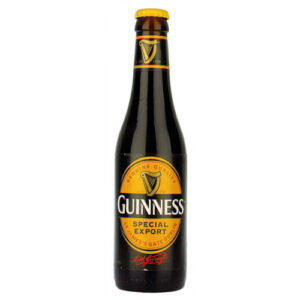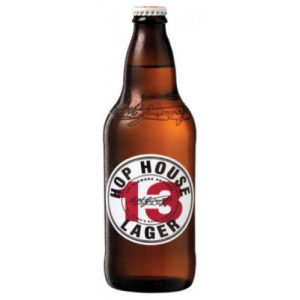Guinness
Guinness is one of the most recognisable beer brands in the world. This famous brewer is the maker of the Irish drink Guinness Draught, a ruby-black dry stout with a velvety finish and a distinctive creamy head. This is considered to be the best Guinness beer, and is brewed in over 50 countries around the world. The brewing giant is now part of Diageo, a company formed back in 1997 that also produces Smirnoff, Baileys, and Johnnie Walker.
Is Guinness beer good for your health? The answer is yes, if consumed in moderation. Guinness contains a high level of folate which is a B vitamin used by the body to make DNA. It also contains a high level of fiber due to the high amount of unmalted barley it contains. And if you’re wondering how much alcohol is in Guinness, the answer is less than you’d think: 4.2% AVB, which is lower than most of the big name lagers.
The silky texture and dense, mousse-like head that Guinness stout is famous for comes from the use of nitrogen to carbonate the beer. The technique, now widely used by other brewers, was invented by a mathematician called Michael Ash who was hired by Guinness in 1951. Nitrogen produces much tinier bubbles than carbon dioxide and it's those tiny bubbles that create the creaminess that Guiness remains famous for to this day.
The official home of Guinness is the St. James’s Gate brewery in Dublin, Ireland. Arthur Guinness famously leased the city centre premises at £45 a year for 9,000 years, back in 1759. By 1886, it was the largest brewer in the world, putting out 1.2 million barrels of the so-called black stuff a year. These days St James’s Gate is also home to the Guinness Storehouse, a dedicated Guinness museum that has received over 20 million visitors since opening in 2000. Visitors can learn all about the brewing process and the ingredients that go into Guinness, as well as marveling at the brand’s history and the many great advertisements it produced over the decades.
Is Guinness beer good for your health? The answer is yes, if consumed in moderation. Guinness contains a high level of folate which is a B vitamin used by the body to make DNA. It also contains a high level of fiber due to the high amount of unmalted barley it contains. And if you’re wondering how much alcohol is in Guinness, the answer is less than you’d think: 4.2% AVB, which is lower than most of the big name lagers.
The silky texture and dense, mousse-like head that Guinness stout is famous for comes from the use of nitrogen to carbonate the beer. The technique, now widely used by other brewers, was invented by a mathematician called Michael Ash who was hired by Guinness in 1951. Nitrogen produces much tinier bubbles than carbon dioxide and it's those tiny bubbles that create the creaminess that Guiness remains famous for to this day.
The official home of Guinness is the St. James’s Gate brewery in Dublin, Ireland. Arthur Guinness famously leased the city centre premises at £45 a year for 9,000 years, back in 1759. By 1886, it was the largest brewer in the world, putting out 1.2 million barrels of the so-called black stuff a year. These days St James’s Gate is also home to the Guinness Storehouse, a dedicated Guinness museum that has received over 20 million visitors since opening in 2000. Visitors can learn all about the brewing process and the ingredients that go into Guinness, as well as marveling at the brand’s history and the many great advertisements it produced over the decades.





